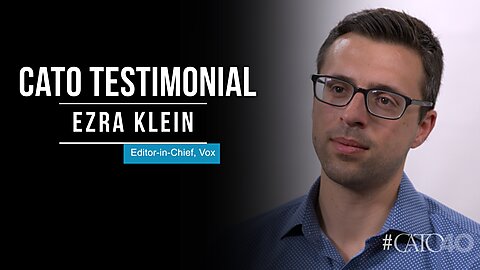Senators Christopher Coons (D‑DE) and Kevin Cramer (R‑ND) introduced a bill, the PROVE IT Act, on June 7, 2022, that lays the groundwork for a carbon tariff. A carbon tariff is a tax on imports based on their carbon intensity, a measure of carbon dioxide and other greenhouse gases (GHGs) per unit of activity (e.g. manufacturing). The PROVE IT requires the Secretary of Energy “to conduct a study and submit a report on the greenhouse gas emissions intensity of certain products produced in the United States and in certain foreign countries.” Presumably, this report would be used to compare the intensities of similar products produced in the United States and elsewhere, and then a carbon tariff would, theoretically at least, be used to tax imports from countries whose products have higher intensities to offset any economic benefits gained from producing in countries with fewer environmental restrictions.
However, carbon tariffs are not the only proposal for taxing imports based on their carbon intensity. For example, the European Union recently implemented a carbon border adjustment mechanism (CBAM), a device designed to “adjust” for the fact that companies headquartered in different countries face different levels of environmental regulation. The CBAM is also a tax on imports, but the “border adjustment” piece requires a domestic carbon tax to adjust (and a pure border adjustment should also include a rebate for exports). The U.S. does not have a federal carbon tax, so any “CBAM” implemented without one would simply be a carbon tariff.
Regardless of the name, there are several reasons to be highly skeptical of a consequential U.S. carbon tariff bill and to be worried that it would do more economic harm than environmental good. Here are three:
First and most obviously, a carbon tariff would impose significant new costs on American consumers, companies, and workers. For example, recent U.S. tariffs on more than $350 billion worth of imports have been found to cost Americans over $50 billion per year. The PROVE IT Act targets over $600 billion worth of imports, suggesting the cost of carbon tariffs could be even higher than the Trump‐Biden tariffs. Import taxes hurt Americans by increasing prices, particularly those in the lowest income brackets, and U.S. companies’ competitiveness by raising their production costs or insulating protected firms from market competition. For example, President Trump’s imposition of tariffs on imported steel inflicted significant damage on steel‐consuming U.S. companies (like nail manufacturers)—the new taxes cost their workers directly through layoffs and the companies became less competitive as they were forced to either share the costs with their customers by raising prices, reduce production, or decrease investment. As a result, the tariffs did little to “level the playing field,” instead the President surrendered home‐field advantage and gave the edge to foreign competition, who faced no such taxes.
Second, the history of U.S. tariff policy raises serious concerns that a carbon tariff would not be administered in a sound and impartial manner. Instead, these tariffs would simply be a vehicle for rote protectionism. A prime example of such protectionism is the steel tariffs imposed or maintained under the Bush II, Trump, and Biden administrations, which had political motivations far exceeding any economic ones. At the same time, U.S. trade remedies (antidumping and countervailing duties (AD/CVDs)) law utilizes a process to calculate dumping or subsidization of imports that “injures” domestic industry but can be “remedied” by imposing duties (tariffs). Similar calculations are likely to be used for carbon intensity. However, AD/CVDs law is notorious for being strongly biased against imports and American consumers. Even worse, in reality, the law is used as a way to deliver protectionist rents to a handful of well‐connected companies (including, again, steel).
Indeed, some already propose that the CVD law—the remedy for U.S. industry alleged to be injured by unfairly subsidized imports—could be used to impose carbon tariffs and thus avoid the need for new legislation. Doing so, however, would subject carbon tariffs to the same problems—regulatory capture, rent‐seeking, etc.—that already afflict U.S. trade remedies proceedings, and worse, invite abuse in similar proceedings determining carbon tariffs. For example, one major problem with AD/CVDs law is the discretion they give to the government when data is missing: if the Commerce Department deems information provided by a foreign company during an investigation to be unreliable or insufficient during an AD/CVD investigation, the agency will use various methodologies to fill it in, inevitably resulting in import duties that unreasonably favor the U.S. companies who lobbied for relief. If Commerce followed similar procedures for carbon intensity, similarly biased results are sure to emerge. In other words, the U.S. government could easily make foreign businesses look like they emit more carbon or GHGs than they truly emit, resulting in high tariffs on foreign products in the name of climate change that really serves to protect American businesses from competition.
Thirdly, U.S. carbon tariffs would likely violate the World Trade Organization (WTO) non‐discrimination rules, which state that WTO members must treat like imported products equally and give imports the same treatment as the same products made domestically. Many legal scholars argue that a border adjustment imposed uniformly on all imports and in concert with an equivalent carbon tax applied to domestically‐produced goods/producers—similar to the EU’s CBAM—might not violate these WTO rules. However, the PROVE IT Act, if turned into carbon tariffs, would satisfy neither condition: the envisioned report applies to only certain countries, and the United States today has no federal carbon tax. Thus, many of the same trade experts who think the CBAM passes the WTO must think a U.S. carbon tariff would fail.
Finally, it is far from certain that carbon tariffs would provide significant climate benefits. The consensus on the efficacy of carbon taxation, including through a CBAM, to reduce carbon or GHG emissions is mixed. While economic theory supports that taxing an item would reduce emissions production, the likelihood of calculating the “right” price for emissions and appropriately administering it is low. Indeed, the level (country, industry, factory) at which a tax is applied could have the opposite effect by encouraging more carbon‐intensive production and there are myriad other factors affecting carbon intensity; energy prices and subsidies (making production cheaper), to name a couple. Moreover, carbon and GHG emissions are not limited to the countries that tax them or the imports from countries chosen for a tariff.
Policymakers would do well to remember that freer trade promotes cleaner environments. Thus, a more effective solution to reducing emissions would be a multilateral commitment such as finalizing the WTO’s environmental goods agreement that reduces tariffs on environmental goods. Making it cheaper to adopt cleaner technologies will increase the availability of products to improve the environment and create a sustainable tree with branches ripe for new opportunities in the trade and environment nexus. Although reducing emissions should be a global effort, Congress and the Biden administration should do their part and breathe some (clean) air into the U.S.’s trade and climate policies by resisting the protectionist path which continually demonstrates the dirty business of rent‐seeking and will do little for clean and renewable technologies innovation.




